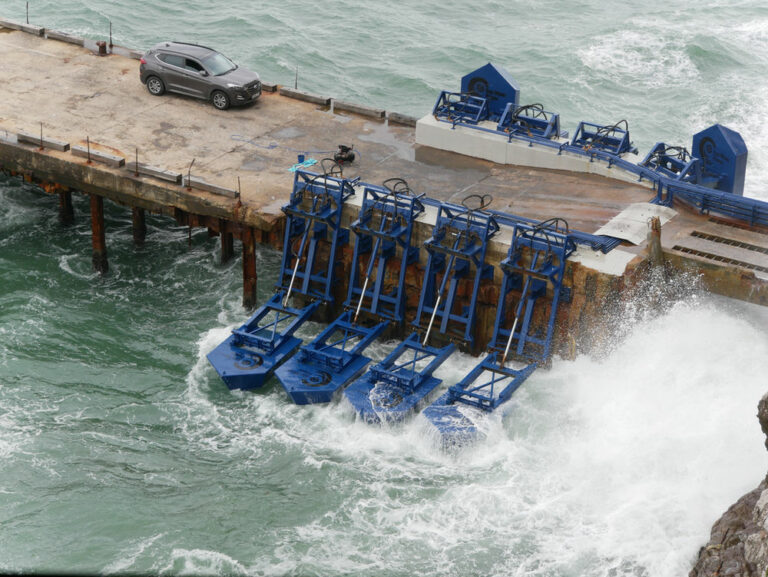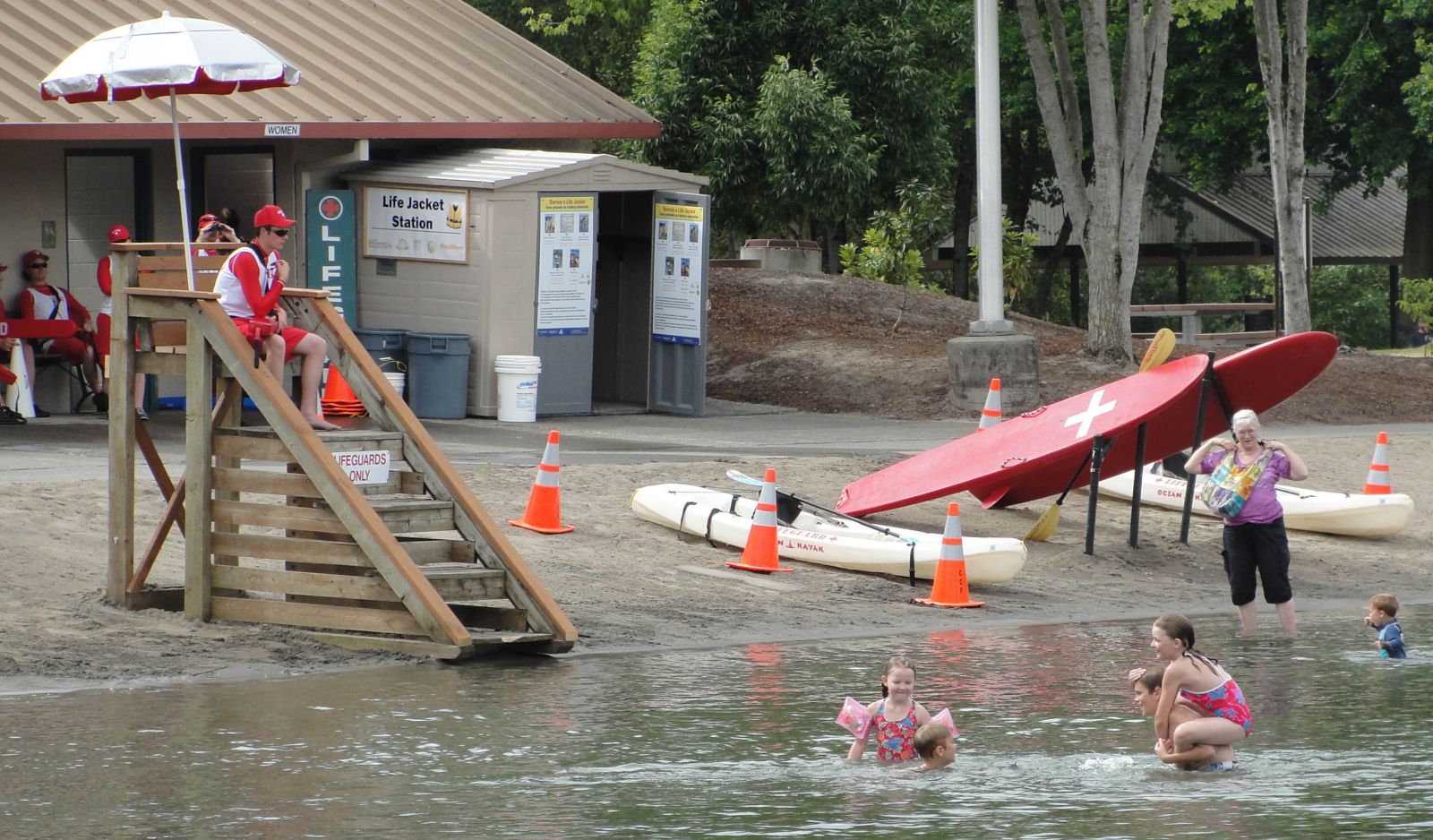Water Assessment Study for Green Hydrogen Production in Pecém, Brazil
Project Overview and Contribution to Sustainable Development Goals (SDGs)
A World Bank-funded water assessment study has been commissioned to secure a sustainable industrial water supply for green hydrogen production at the Pecém Industrial and Port Complex (CIPP) in Brazil. The engineering consultancy RINA, in partnership with the local firm Krypton, will conduct the study. This initiative is a critical step in developing the CIPP as a low-carbon industrial hub, directly supporting several United Nations Sustainable Development Goals (SDGs).
The project’s core objective aligns with:
- SDG 7 (Affordable and Clean Energy): By facilitating the production of green hydrogen, the project contributes to the global transition towards clean and sustainable energy sources.
- SDG 9 (Industry, Innovation, and Infrastructure): The study aims to develop resilient and sustainable infrastructure necessary for a new green industry, fostering innovation in Brazil.
- SDG 17 (Partnerships for the Goals): The collaboration between an international consultancy (RINA), a local firm (Krypton), and a global financial institution (World Bank) exemplifies the multi-stakeholder partnerships required to achieve sustainable development.
Strategic Water Sourcing and SDG Alignment
The study will investigate two primary water sourcing strategies, each with significant implications for sustainable resource management.
- Reuse of Treated Effluent: This strategy involves utilizing treated wastewater from sewage treatment plants in the western region of Fortaleza. This approach embodies circular economy principles and directly advances SDG 6 (Clean Water and Sanitation) and SDG 12 (Responsible Consumption and Production) by reducing waste and promoting the efficient use of water resources.
- Seawater Desalination: This option will be evaluated as a potential source of industrial water. The assessment will include a rigorous analysis of its environmental impact to ensure alignment with SDG 14 (Life Below Water), safeguarding marine ecosystems from potential adverse effects.
Scope of Assessment and Community Impact
The comprehensive assessment will cover multiple domains to ensure a holistic and sustainable outcome. The key areas of analysis include:
- Technical and Economic Feasibility: Evaluating the viability of the proposed water sourcing solutions.
- Environmental Impact Analysis: A detailed assessment of water demand at the CIPP over the next 5-10 years, crucial for mitigating climate impact and supporting SDG 13 (Climate Action).
- Regulatory and Infrastructure Evaluation: Ensuring compliance with Brazilian standards and the optimal use of existing water systems.
- Community Benefits: A specific evaluation of how the proposed infrastructure can enhance water access for surrounding communities, directly contributing to SDG 6 (Clean Water and Sanitation) and SDG 11 (Sustainable Cities and Communities).
Broader Industrial and Sustainable Context
This water assessment study is part of a larger strategic development in the Port of Pecém. Related initiatives include an agreement with Fuella for a large-scale green ammonia project and the selection of Stolthaven Terminals and Global Energy Storage (GES) to develop a green ammonia terminal. These collective efforts position the CIPP as a significant future hub for clean energy production, reinforcing Brazil’s commitment to SDG 7 and SDG 9 by building a competitive and sustainable industrial ecosystem.
1. Which SDGs are addressed or connected to the issues highlighted in the article?
SDG 6: Clean Water and Sanitation
- The article’s central theme is a water assessment study for industrial use. It explicitly discusses securing a water supply through strategies like “the reuse of treated effluent from sewage treatment plants” and “seawater desalination,” which are core components of water management and sanitation. It also mentions evaluating how the new infrastructure could “enhance water access for surrounding communities.”
SDG 7: Affordable and Clean Energy
- The entire project is aimed at supporting “green hydrogen production,” which is a key form of clean energy. The article mentions the Pecém Industrial and Port Complex (CIPP) as a “flagship low-carbon development hub” and notes Brazil’s “clean energy future.” The development of a “large-scale green ammonia project” further reinforces this connection.
SDG 9: Industry, Innovation, and Infrastructure
- The project involves developing infrastructure for a major “Industrial and Port Complex.” The study focuses on the “technical feasibility,” “economic viability,” and compatibility with “local infrastructure and regulation” for a new water supply system. This is directly related to building resilient, sustainable infrastructure to support industrialization and innovation.
SDG 17: Partnerships for the Goals
- The article highlights a multi-stakeholder partnership to achieve these goals. It is a “World Bank-funded assignment” delivered by an Italian company, “RINA, in partnership with local firm Krypton.” This collaboration between international organizations, foreign private companies, and local firms exemplifies the spirit of global partnerships for sustainable development.
2. What specific targets under those SDGs can be identified based on the article’s content?
SDG 6: Clean Water and Sanitation
- Target 6.3: By 2030, improve water quality by reducing pollution, …substantially increasing recycling and safe reuse globally. This is directly addressed by the plan to explore “the reuse of treated effluent from sewage treatment plants.”
- Target 6.4: By 2030, substantially increase water-use efficiency across all sectors and ensure sustainable withdrawals and supply of freshwater to address water scarcity… This is relevant as the study aims to secure a sustainable “industrial water supply” for a water-intensive process (green hydrogen production) by exploring alternatives to freshwater, such as desalination and reuse.
- Target 6.a: By 2030, expand international cooperation and capacity-building support to developing countries in water- and sanitation-related activities and programmes… The project itself, funded by the World Bank and carried out by an international firm (RINA) in Brazil, is an example of this target in action.
- Target 6.b: Support and strengthen the participation of local communities in improving water and sanitation management. The study’s goal to “evaluate how the proposed infrastructure could enhance water access for surrounding communities” aligns with this target.
SDG 7: Affordable and Clean Energy
- Target 7.2: By 2030, increase substantially the share of renewable energy in the global energy mix. The focus on “green hydrogen production” and a “large-scale green ammonia project” is a direct contribution to increasing the share of renewable and clean energy sources.
- Target 7.a: By 2030, enhance international cooperation to facilitate access to clean energy research and technology… The partnership between Brazilian, Italian, and Norwegian entities, funded by the World Bank, to develop a “low-carbon development hub” is a clear example of international cooperation for clean energy technology.
SDG 9: Industry, Innovation, and Infrastructure
- Target 9.1: Develop quality, reliable, sustainable and resilient infrastructure… to support economic development and human well-being. The project is about planning and assessing the necessary water infrastructure to support a “flagship low-carbon development hub.”
- Target 9.4: By 2030, upgrade infrastructure and retrofit industries to make them sustainable, with increased resource-use efficiency and greater adoption of clean and environmentally sound technologies… The entire initiative to supply water for “green hydrogen production” is about creating sustainable industrial processes and infrastructure.
SDG 17: Partnerships for the Goals
- Target 17.17: Encourage and promote effective public, public-private and civil society partnerships… The project is a “World Bank-funded assignment” (public-international), conducted by “RINA” (private) in partnership with “local firm Krypton” (private), for the benefit of a major industrial complex in Brazil. This multi-stakeholder model is a direct application of this target.
3. Are there any indicators mentioned or implied in the article that can be used to measure progress towards the identified targets?
SDG 6: Clean Water and Sanitation
- Implied Indicator for Target 6.3: The volume of treated wastewater to be reused. The study will assess the feasibility of reusing “treated effluent from sewage treatment plants,” which implies measuring the potential quantity and quality of this water source.
- Implied Indicator for Target 6.4: The volume of water supplied by desalination and reuse versus traditional freshwater sources. The study’s focus on these two strategies implies that their contribution to the overall water supply will be a key metric.
- Implied Indicator for Target 6.b: An assessment report on enhanced water access for communities. The article explicitly states the study will “evaluate how the proposed infrastructure could enhance water access for surrounding communities,” making this evaluation a direct indicator.
SDG 7: Affordable and Clean Energy
- Implied Indicator for Target 7.2: The production capacity of green hydrogen and green ammonia. The development of a “large-scale green ammonia project” and the infrastructure for “green hydrogen production” are direct measures of progress.
SDG 9: Industry, Innovation, and Infrastructure
- Indicator for Target 9.1 & 9.4: The completion of the “water assessment study.” This study, which includes assessments of “technical feasibility, economic viability, environmental impact, and compatibility,” is a tangible output and a critical first step in developing sustainable infrastructure.
- Indicator for Target 9.4: A “detailed environmental impact analysis assessment of water demand.” This is mentioned as a specific deliverable of the study and serves as a key indicator for ensuring the sustainability of the industrial expansion.
SDG 17: Partnerships for the Goals
- Indicator for Target 17.17: The amount of financial resources committed. The article mentions this is a “World Bank-funded assignment,” indicating a specific financial commitment from an international partner. The formal agreements signed, such as the one between “Fuella” and the “Port of Pecém,” are also clear indicators of established partnerships.
4. Table of SDGs, Targets, and Indicators
| SDGs | Targets | Indicators |
|---|---|---|
| SDG 6: Clean Water and Sanitation |
6.3: Improve water quality and increase safe reuse.
6.4: Increase water-use efficiency and ensure sustainable supply. 6.b: Support local community participation in water management. |
Assessment of the feasibility of reusing “treated effluent from sewage treatment plants.”
Assessment of “seawater desalination” as a sustainable water source. Evaluation of how infrastructure can “enhance water access for surrounding communities.” |
| SDG 7: Affordable and Clean Energy |
7.2: Increase the share of renewable energy.
7.a: Enhance international cooperation for clean energy technology. |
Development of “green hydrogen production” and a “large-scale green ammonia project.”
The existence of the international partnership itself (Brazil, Italy, Norway, World Bank) to build a “low-carbon development hub.” |
| SDG 9: Industry, Innovation, and Infrastructure |
9.1: Develop quality, reliable, sustainable infrastructure.
9.4: Upgrade infrastructure and industries for sustainability and clean technology adoption. |
Completion of the “water assessment study” covering technical, economic, and environmental feasibility.
Completion of the “detailed environmental impact analysis assessment of water demand.” |
| SDG 17: Partnerships for the Goals | 17.17: Encourage and promote effective public-private partnerships. |
The “World Bank-funded assignment” itself.
The formal partnership between “RINA” (international private) and “Krypton” (local private). |
Source: offshore-energy.biz







